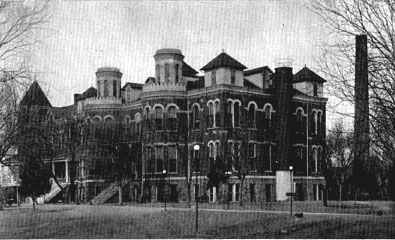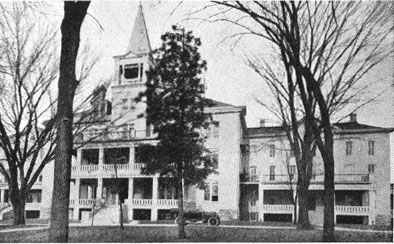
Main Building Soldiers' and Sailors' Home, Burkett, (Grand Island) A comparison of conditions today with those of some fifteen years back shows a much healthier state of affairs now than then. Much has been learned of farming under dry conditions. The game has been going on long enough to have accumulated a considerable fund of experience. Out of the experiences of the farmers themselves there has been slowly crystallizing some very sound and definite information. This has been added to by technical investigations, all of which have helped in bringing about a more thorough understanding of conditions. Crops better adapted to conditions have been introduced or developed. Machinery more suitable to the extensive type of farming has been obtained. Prices of farm products have risen. The better understanding of conditions, together with crops and machinery more adapted, has resulted in fewer crop failures. When crop failures do come they are less serious because the farmers have accumulated a working capital sufficient to tide them over adverse seasons, or have an effective working credit. |
![]()
not been broken and cropped long enough to have lost much of their virgin fertility. Dry farming soils might be characterized as being rather deficient in humus and rich in mineral matter. They are peculiar in having no distinct line of demarcation between soil and subsoil as is found in the more humid sections. Having a low percentage of clay, dry farming soils are very easily tilled: consequently a given equipment will tend more land than in more humid sections. The soils are usually deep, allowing deep feeding by crop roots and a large capacity for water storage. Shallow soils underlaid with impervious strata or coarse gravel are less adapted to water storage, and on such soils crops are dependent upon seasonal rainfall. |
![]()
![]()
 |
 |
 |
© 2002 for the NEGenWeb Project by Pam Rietsch, Ted & Carole Miller
